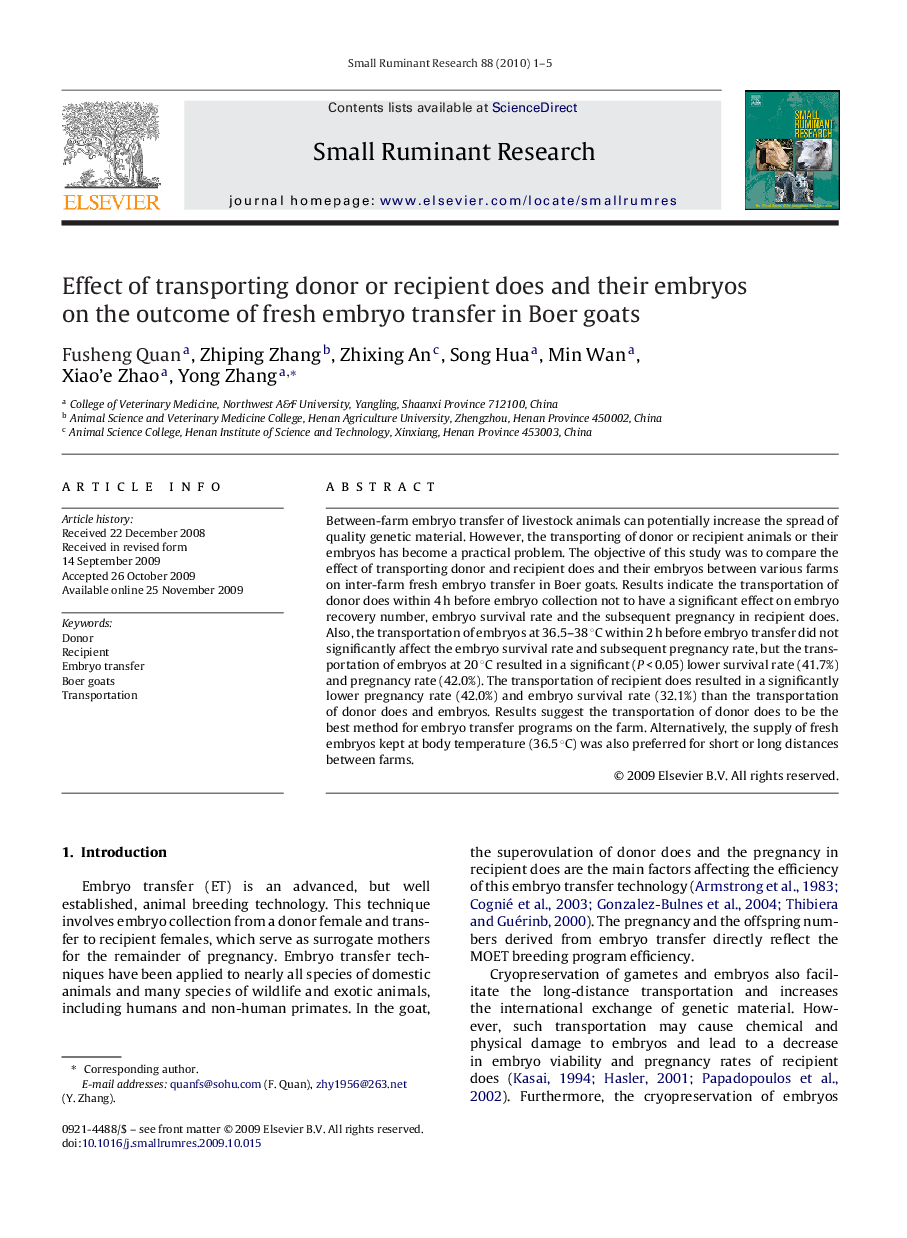| Article ID | Journal | Published Year | Pages | File Type |
|---|---|---|---|---|
| 2457697 | Small Ruminant Research | 2010 | 5 Pages |
Between-farm embryo transfer of livestock animals can potentially increase the spread of quality genetic material. However, the transporting of donor or recipient animals or their embryos has become a practical problem. The objective of this study was to compare the effect of transporting donor and recipient does and their embryos between various farms on inter-farm fresh embryo transfer in Boer goats. Results indicate the transportation of donor does within 4 h before embryo collection not to have a significant effect on embryo recovery number, embryo survival rate and the subsequent pregnancy in recipient does. Also, the transportation of embryos at 36.5–38 °C within 2 h before embryo transfer did not significantly affect the embryo survival rate and subsequent pregnancy rate, but the transportation of embryos at 20 °C resulted in a significant (P < 0.05) lower survival rate (41.7%) and pregnancy rate (42.0%). The transportation of recipient does resulted in a significantly lower pregnancy rate (42.0%) and embryo survival rate (32.1%) than the transportation of donor does and embryos. Results suggest the transportation of donor does to be the best method for embryo transfer programs on the farm. Alternatively, the supply of fresh embryos kept at body temperature (36.5 °C) was also preferred for short or long distances between farms.
